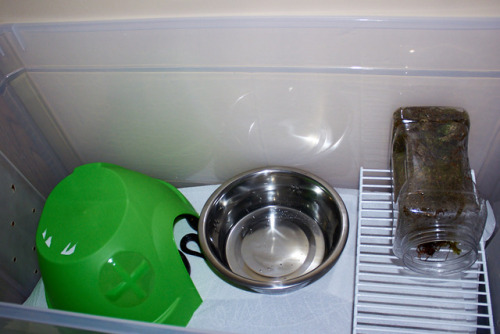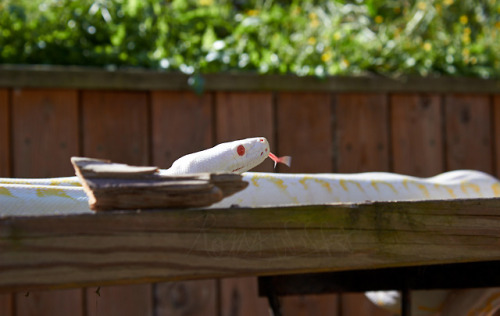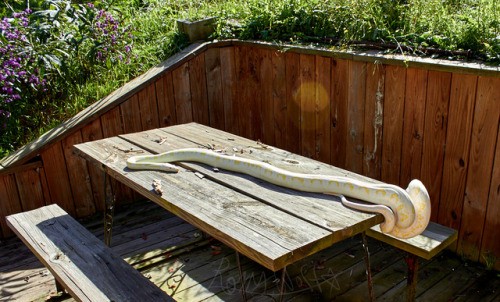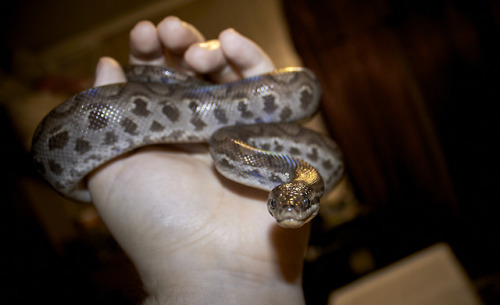#herptile
I’ve been awake for too long and I googled pictures of toads and now I’m crying. I NEED someone else to appreciate narrow-mouthed toads PLEASE. they are so underhyped and it hurts my heart







Nothing major, I don’t think, but we’re going to the vet today (several hours away but that’s the closest one in rural hell) to get him checked out and do a fecal float. The nature of his illness pertains to the contents of his stool, but trust me friends, you do not want details.
I’ll post an update when I get home.
i thought of one more benefit to bins over glass enclosures and even custom-built ones- but it mostly applies to larger snakes:
when your lovable linguine destroys her whole entire house during bathroom day, a bin’s light enough for you to haul the goddamn thing out in the yard to spray out with a hose (or at least into the bathroom to spray out in the shower!)
it is the small luxuries that i appreciate most…
I’ve not posted one of my quarantine bins before I don’t think! This is where the Newdle currently lives – it’s austere, but it serves his needs while allowing me to monitor his health. As far as quarantine goes, my goals are to suit the inhabitant first, and to do it in such a way that can be sterilized clean and easily monitored for things like mites second. If you’re crafty, you can do both without compromising either goal. Prettiness can come later – quarantine’s a time for pure function!
This is a long ramble, so I’m putting this under a read-more!
To start this off, since I know a lot of people dislike bins, I’ll go into why I personally am using one in this specific scenario. For most snakes (as I can only speak from a snake perspective here,) I generally prefer them to the big glass enclosures you see at most pet stores; nice as they are, they’re expensive, fragile, and have to be modified to hold humidity and heat – and because of their weight and the aforementioned fragility, cleaning them is like punching yourself in the face. Mites can hide in the crevices of the glass that are incredibly hard to get into, as well, which is far from ideal for quarantine in my opinion! While they have their uses, and I do own a fair few of them, overall I’m gonna go for a bin in most cases for my snakes – but especially if humidity is a concern, as bins hold humidity overwhelmingly better than unmodified glass aquariums. (It’s also worth mentioning that there are also custom-made enclosures that are the best of both worlds, and generally those are the best option to go with overall – but the cost can be prohibitive, especially if you gotta ship freight.)
That was The Bin Manifesto. Now to the actual enclosure!
First things first, he’s being housed on kitchen roll. Mites show up great on white paper, and it’s a cheap and easily replaced medium for lining the bottom of the bin. (It’s not great for humidity purposes, however, so I mist as needed to make sure it doesn’t dry out too much.) Cleaning is a breeze, just replace it all, clean out the bin, put it all together again, and you’re golden! After quarantine, I’ll move this fellow onto a humidity-friendly substrate, probably orchid bark with pillow moss.
(Unseen but important! Underneath the kitchen roll is a temperature probe that regulates how hot the undertank heater is allowed to get! This makes sure that the heater I’m using is safe for my friend here! Never skimp on the thermostat/rheostat folks!)
Next, the green hide is on the warm side. The hide itself is uhh, this plastic bit made for guinea pigs and other large rodents… it’s huge and cheap and I LOVE THEM because I can spray them down no matter WHAT happens to them. Ivo has one too! She wedges herself up in there and feels nice and tight and secure. They’re only like 9 dollars, and I literally have not found anything better not named “PVC pipe” for large snake hides. It’s not the most decorative, but it does the job fantastically.
Further on, there’s a shelf for climbing since this is a semi-arboreal species. It’s sturdy and very cheap and you can get them in the Big Lots for about 3 dollars, and I use them for anything that likes to climb in quarantine because they can be sprayed down and sterilized – which, again, is the goal here. Sanitation! They’re not the comfiest thing, admittedly, but they’ll do the job until I clear this fellow for some of my driftwood.
(Speaking of: enclosure wood is expensive. Terribly so. But it’s because it takes such a ton of work to prepare the wood – me sitting on my back porch at the picnic table with a power sander, a saw, and a lot of profanity for several hours = one (1) appropriate piece of wood for an enclosure. It’s worth the money for someone else to save you the labor if you can afford it, trust me. I would kill a man for a sandblaster.)
On top of that shelf, we have the second hide. It’s a moist hide full of damp sphagnum moss that he likes to wedge himself into. Moist hides help raise the ambient humidity in an enclosure, and he can curl up in there whenever he likes – but I also mist a time or two to help keep the humidity up, if I need to.The way I drilled the holes into the bin ensures that humidity doesn’t escape too fast (and that the air won’t stagnate, either,) so I usually don’t have to mist too often!
But… yes, that’s a bit on the setup that the Newdle’s currently living in. It’s clean, efficient, adequate, and roomy – and for this fellow, it’s a good fit. At the end of the day the best enclosure is the one that meets in the center of the Venn Diagram between cleanliness and husbandry, and that can vary wildly from animal to animal – so I don’t endorse this as a one-size-fits-all solution, it’s simply how I’m doing things over here!
Thank you for reading!
Post link
That face! My child! Lucy’s getting so big! A precious daughter! A sweet loop! A baby!
Bonus under the cut!

God she’s even funnier out of focus.
Post link
With tumblr imploding, I have no idea where to move to now. Anyone have any suggestions for where to move this blog?
Warning: Non Noodle Content
This is Wade. He’s a little leggy man and he lives in my home now.
I love him.
Post link
TL;DR pinworms
We can treat this. We’re good. It’s gross. But I will survive, and more importantly, so will he.
blessed be the shoelace™ for always going to the bathroom in the same corner of her enclosure, thank you for this gift of convenient spot cleaning oh kind and merciful shoelace™, yours is the only order in a truly unjust and chaotic world

This v supportive White’s tree frog wishes you a Hoppy Pride ️
This lil friend is a part of my upcoming Pride sticker sheet! Preorders are up now in my shop~
starrypaige.com

June’s Patreon-exclusive sticker & print feature a Red-Eyed Crocodile Skink with hydrangeas!
Bonus sticker if we remain above the goal (found on my Patreon) will be a Socotra Island blue baboon spider, as voted for by my patrons!
Join by tomorrow, June 1st at 11:59PM PST to receive these babies in the mail next month!~
patreon.com/starrypaige
I made some cute thingies
All of this is available at starrypaige.com
Madagascar 2016 – A comprehensive list of species I have seen.
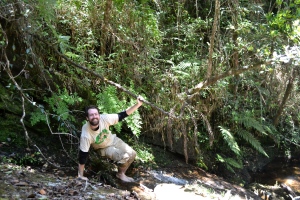
Hello everyone, Only recently, I returned (slightly earlier than planned) from my latest adventure to the ancient and most biologically diverse islands on the planet, the island of Madagascar. For the past few months I have been traveling the eastern and central regions of this most magical of places, sleeping rough in a tent the middle of the rainforest to hiking through some of the most…
Tokyo Salamander (Hynobius tokyoensis) Care Sheet
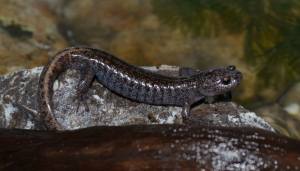
Author: Joshua S. Ralph. Establishment/Organisation: MantellaMan Conservation. First published: 21/02/16 Review date: Common name: Tokyo Salamander (Tokyo Lungless Salamander, Hynobid Salamander) Scientific name: Hynobius tokyoensis – Tago, 1931 Family: Hynobiidae Country of Origin: Japan Localities: Mainly distributed in the Fukushima Prefecture southwestwards through Tokyo to Kanagawa…
Phantasmal poison frog (Epipedobates tricolor) have extremely toxic skin. They secrete epibatidine, a toxic alkaloid. The toxin binds to pain receptors, cause numbness and eventual paralysis resulting in death. Potentially, this toxin could be 200 times more potent than morphine. They derive their poison from their diet of insects. Various chemicals from the insects collect in glands in the frogs’ skin.
Post link

